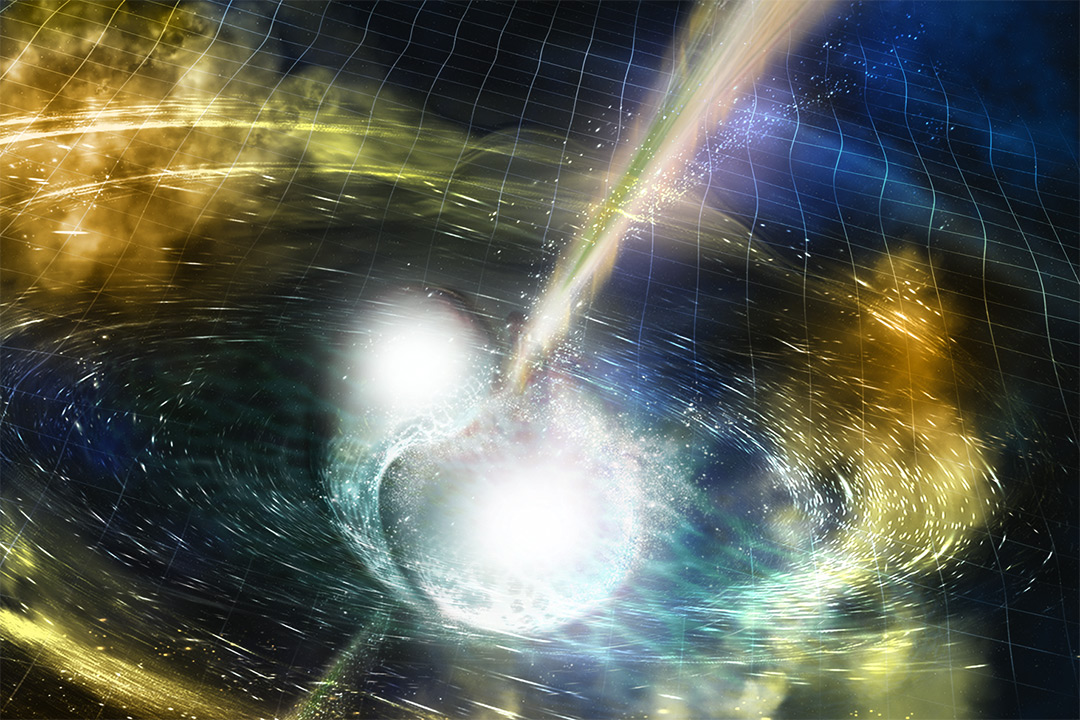RIT leads project to simulate neutron star mergers
Neutron star collisions linked to gold, platinum and other heavy elements
Rochester Institute of Technology is advancing computer simulations to predict, for the first time, the complete cycle of neutron stars merging with other neutron stars or black holes. These extreme astrophysical events may be a source of heavy elements that make up the Earth and other planets, and represent the new field of multi-messenger astronomy.
The project will advance computational methods for understanding the dynamics of ejection, accretion, winds and jets in neutron star merger, and is supported by $1.5 million from NASA.
“These mergers expose the extremes of gravitational, electromagnetic and particle physics,” said Manuela Campanelli, director of RIT’s Center for Computational Relativity and Gravitation. “They are some of the greatest opportunities for multi-messenger science and the combined study of bursts of light spanning across the electromagnetic spectrum and powerful gravitational wave emissions.”
Campanelli will lead the collaboration involving colleagues at Johns Hopkins University, NASA Goddard Space Flight Center and the University of West Virginia, and other leading scientists in binary neutron stars and black hole-neutron star merger simulations. She is also the director of RIT’s signature New Frontiers in Gravitational-Wave Astrophysics program.
“Our goal is to develop and use an integrated set of algorithms and tools to improve our understanding of the entire binary neutron star merger process from beginning to post-merger,” Campanelli said. “We are looking at the big picture—including the production of jets of gas with large concentrations of nuclear elements and strong gravitational wave signatures.”
RIT researchers will simulate electromagnetic signals and jets produced during post-merger, using the National Center for Supercomputing Applications at the University of Illinois at Urbana-Champaign.
The RIT team recently won its largest allocation time (the equivalent of 163.2 million central processing units) on NCSA’ Blue Waters for a corollary study involving magnetohydrodynamic simulations of accreting supermassive black holes. The Astrophysical Journal, on Oct. 2, published a related study led by RIT.














